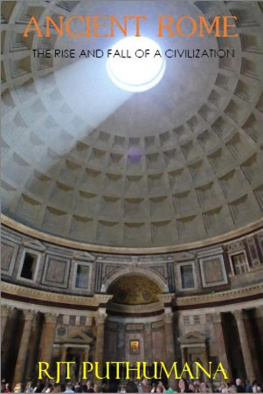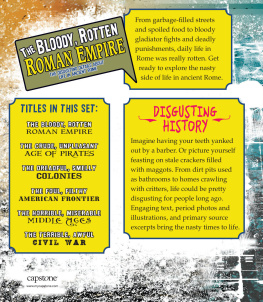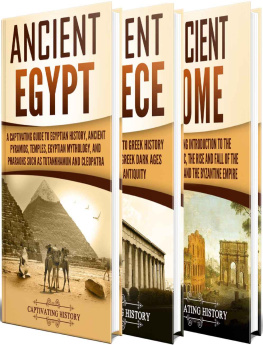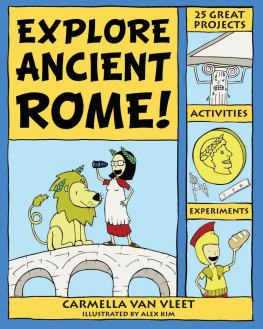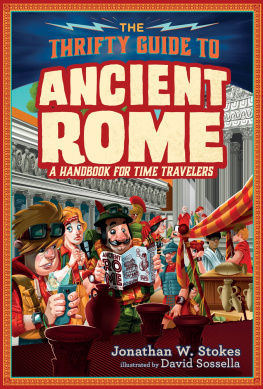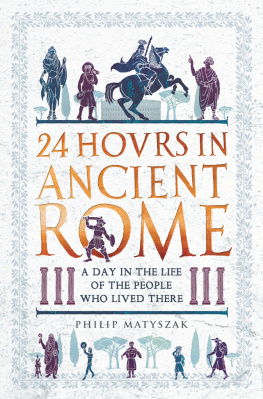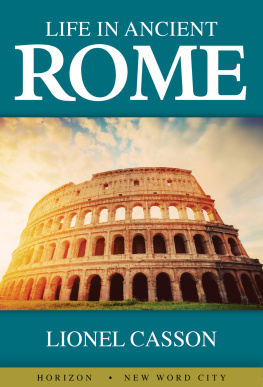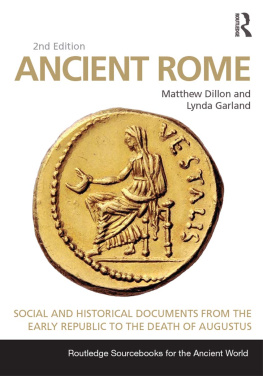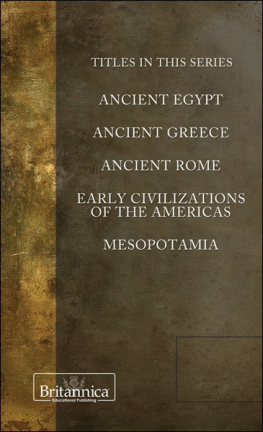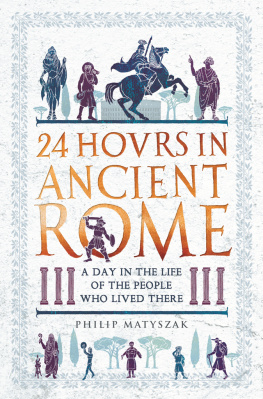G is for Gladiator
An Ancient Rome Alphabet

Written by Debbie and Michael Shoulders and Illustrated by Victor Juhasz

To all of the ancient peoples of Italia who are part of my heritage,
especially my grandparents, John and Carmela Cacicia
D.S.
To my Italian mother-in-law, Mary Jane Cacicia Adams
M.S.
For Magnus Xander Juhasz
V. J.
G is for Gladiator
An Ancient Rome Alphabet
According to Roman legend, what famous twins were raised by a she-wolf? Who wrote the epic poem, The Aeneaid? What famous leader brought law and stability yet was stabbed to death by a group of senators? Life in ancient Rome was certainly not for the faint of heart! In G is for Gladiator: An Ancient Rome Alphabet, readers are given an A-to-Z introduction to ancient Rome, including its social, political, and civil customs and practices.
Husband-and-wife writing team Debbie and Michael Shoulders explore topics such as Roman law, architecture, mythology, and of course, the ultimate fight club (gladiatorial combat).
From the relaxed surroundings of the public baths to the rigid codes of the military legions, Romes ancient civilization is unveiled. Colorful, entertaining artwork from Victor Juhasz, the illustrator of Z is for Zeus: A Greek Mythology Alphabet, brings it all to vivid life.
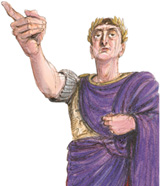
Debbie & Michael Shoulders
Debbie is a full-time middle-school teacher and writes a weekly column called Story Time for Tennessees oldest newspaper, where she reviews childrens literature with an educators slant. Mike has a doctorate of education, was an educator for 30 years, and now writes and travels year round across the US and Europe promoting his books and providing in-service training to teachers on literacy issues. He has written 10 books for Sleeping Bear Press. Mike and Debbie live in Clarksville, Tennessee.
Victor Juhasz
Victor Juhaszs previous books for Sleeping Bear include R is for Rhyme, Z is for Zeus, Everyone Counts, H is for Honor, and D is for Democracy. He serves on the board of the Society of Illustrators. His caricatures and illustrations appear regularly in many major magazines and newspapers including Rolling Stone, Golf, Mens Journal, GQ, Opera News, Barrons, and many others.Victor lives in Stephentown, New York.

A
The story of Rome began in 753 BC. Rome is called the Eternal City because its citizens developed language, art, and technology that still exists. The many archaeological ruins found in Italy today continue to share information of a sophisticated culture founded thousands of years ago. The chipped stone columns of the Roman Forum talk of architectural styles and the kind of technology that was used to erect the temples and basilicas. Bronze etchings and stone carvings show how the people looked and dressed. The Romans were the first civilization to accurately model the human body through sculpture. They left portraits of their leaders and important members of society. Even tombstones hold writings that give information about the daily lives and culture of the people.
As early as 1450, archaeologists began to collect the utensils, tools, and coins that provided clues to early Roman culture. Today, plans for additional subway tracks and new highways needed to transport Romes 2.8 million inhabitants are constantly revised as archaeological digs recover artifacts that tell new stories of Romes glory days.
A is for Archaeologist Archaeologists uncover clues to life in ancient Rome, revealing buried treasures:
frescos, rings, a vase, and a comb.
B
Roman engineers were leaders in the use of cement, baked brick, arches, and domes. They were so successful that many of their buildings still stand. Visitors can walk the Appian Way, an ancient highway stretching from Rome to the present-day city of Brindisi on the coast of the Adriatic Sea, a distance of 363 miles (584 km).
The building of roads was important in helping to connect the various cultures of the Empire. This could not have been done without a large supply of slaves and soldiers. Slaves were people who had been stripped of their freedom, often captured when Rome acquired new territories or bought from slave traders. They worked to construct a network of 53,000 miles (85,000 km) of highways. A surveyor located the flattest and most direct route. Then workers cleared brush and earth to dig a trench 3 feet (1 m) deep. The trench was filled with layers of sand, concrete, and stones. The workers then placed a curved surface, or camber, over the stones and dug side ditches to steer water away and prevent cracking. This method was so effective that these ancient paths were used well into modern times. Today asphalt is placed over the old road to build up the surface.
B is for Building Many ancient buildings still stand today in Rome:
bridges, temples, statues, and Pantheons massive dome.

C
Breaking the law in ancient Rome had consequences, just like today. The Romans recorded their laws on the Twelve Tables published in 450 BC. They were organized in twelve sections and displayed for all citizens in the Roman Forum, describing laws about money, marriage, property rights, inheritance, and public behavior. For example, one such law stated that if a neighbors tree bent by the wind fell over to your farm, you could petition for its removal. The legal system evolved and changed but it was always based on the Twelve Tables.
Unlike our system today, an individual initiated court action rather than the court system. If individuals felt they had been wronged, they would consult a praetor, an elected magistrate, similar to a lawyer today, who would decide if a trial was needed. The praetor would then seek a judge to oversee the proceedings. The offended person also had to make sure the accused was present in court, even using force if necessary.
If the case was scandalous enough, the trial might be conducted in a larger forum like a basilica. This made room for spectators to cheer and jeer the proceedings, perhaps influencing the outcome. Defendants might come to court dressed in rags with ashes covering their hair. A weeping spouse would complete the picture, all designed to arouse sympathy from the crowd. In important cases, a jury of up to seventy-five people voted and decided the outcome, while the judge administered punishment. A guilty person could be exiled to a distant land in the Roman Empire, lose their citizenship or property, or be included in the gladiator games.
C is for Crimes and Courts The Twelve Tables defined Roman law
what was legal and was not.
Courts handed out punishments to those who broke them and got caught.





